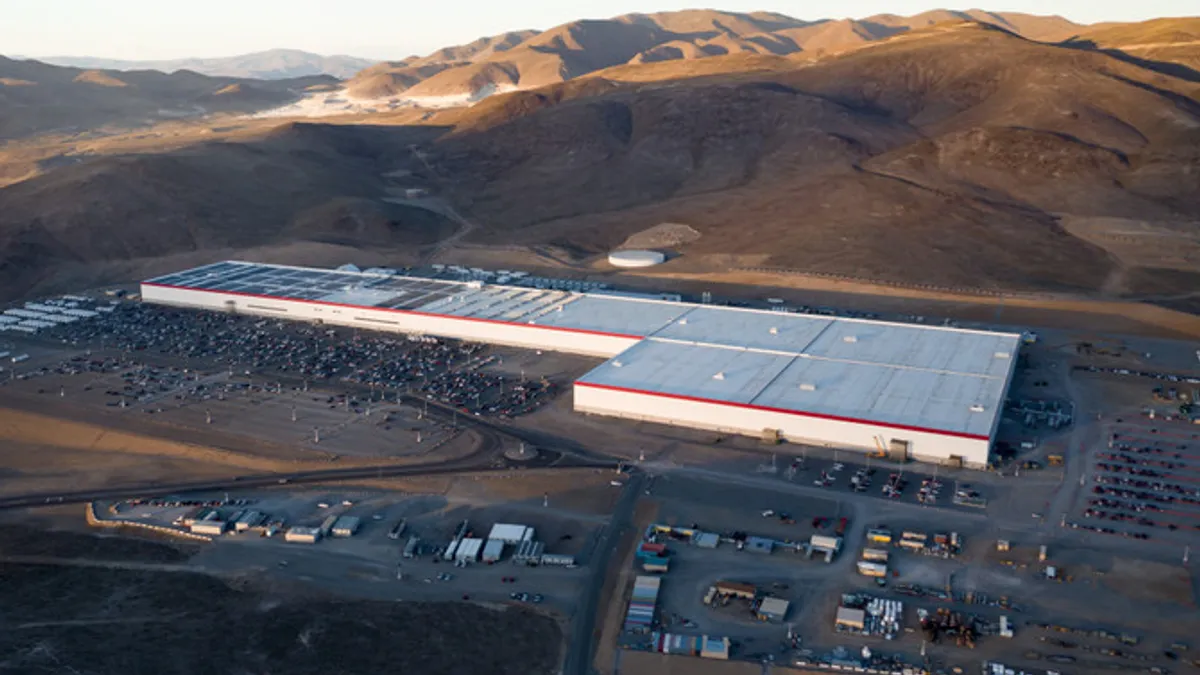EV maker Tesla for the first time disclosed its Scope 3 emissions late last month, revealing that its supply chain footprint accounts for most of the company’s total climate impact.
The goods and services Tesla procured from third party vendors amounted to about 22.3 million tons of carbon emissions in 2022, by far the largest chunk across its footprint, according to the company’s 2022 impact report.
By comparison, Ford’s carbon emissions from the goods and services it procures stood at 40.5 million metric tons. For reference, Ford sold a total of nearly 1.9 million vehicles during the year while Tesla sold 1.3 million.
Tesla’s fuel-related activities, upstream transportation and distribution, and waste all accounted for hundreds of thousands of tons of additional carbon emissions each.
Breaking down Tesla’s Scope 3 emissions further, the largest source comes from emissions related to battery emissions, which accounted for 27% of the total in 2022, followed by aluminum and steel emissions, at 18% and 8%, respectively. The remaining 47% fall the under “all others” umbrella category.
In the battery supply chain, the lion’s share of emissions come from chemical processing of lithium, nickel and cobalt, with extraction, transportation and upgrading making up much smaller relative chunks.
On the other end of the value chain, Tesla said that its customers avoided releasing roughly 13.4 million metric tons of carbon emissions during 2022, equal to 33 billion miles of driving by gasoline-powered cars. The total emissions from consumers’ use of Tesla products totaled 3.4 million tons of carbon dioxide in 2022.
Again using Ford as a comparison, use of its sold products — the large majority of which are still mostly gasoline powered — emitted 286.5 million metric tons of carbon, which accounted for more than 85% of its total 334.8 million metric tons in carbon emissions, which includes Scopes 1, 2 and 3.
Visiting the source of battery minerals
In its impact report, Tesla also said it was working to trace its mineral supply chain and identify risks with labor abuses and other concerns.
The company noted several trips to mining sites to research conditions. In November, a Tesla team met with NGOs and other stakeholders in the Democratic Republic of Congo, the world’s largest source of cobalt for reusable batteries. The company said it focused on industry relations with artisanal miners — which other tech companies, including Microsoft, say is key to responsible sourcing in the DRC.
Tesla said it also visited nickel mine sites in Canada and Indonesia, and lithium mines in Argentina and Chile.
The company’s due diligence program led it to cut 29 nickel suppliers from its supply chain and 12 cobalt suppliers.
Broadly, Tesla said that dealing directly with suppliers helped it reduce risks in its supply chain. More than 55% of cobalt supply, 45% of nickel and 95% of lithium were sourced directly from upstream suppliers, the company said in its report.













